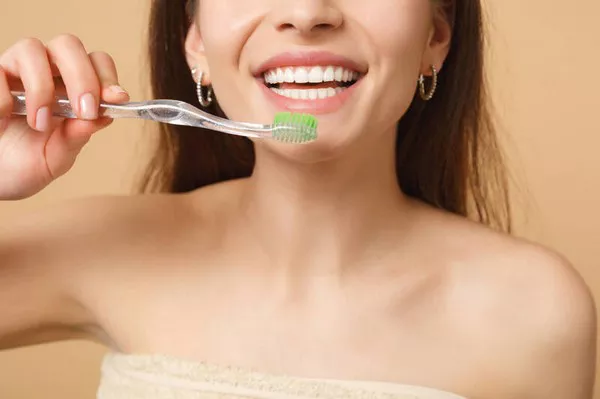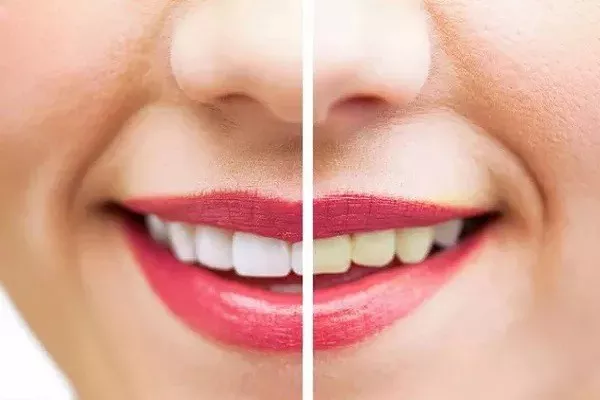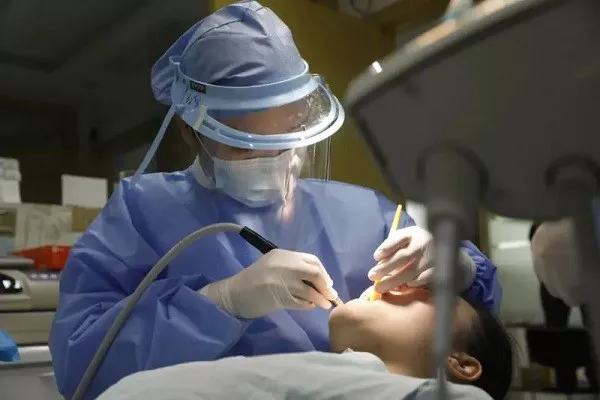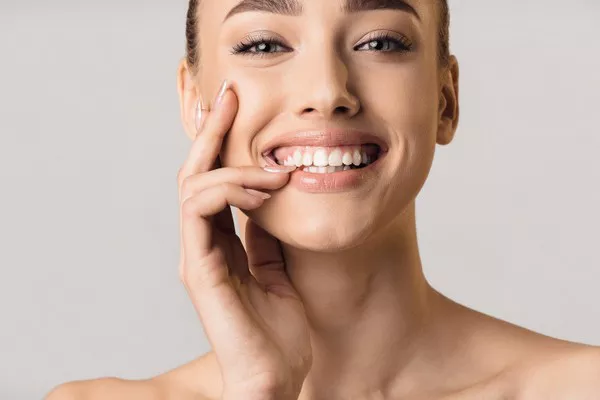If you’re self-conscious about the yellow patches on your teeth, you are not alone. Many people struggle with this issue, but luckily there are several effective ways to get rid of those pesky stains and brighten up your smile. In this article, we’ll be discussing some easy-to-follow steps that will help you eliminate yellow patches on your teeth.
Causes of Yellow Plaque on Teeth:
Yellow plaque on teeth is a common problem that affects many people. It can be caused by several factors, including:
- Poor Oral Hygiene: If you don’t brush and floss your teeth regularly, food particles and bacteria can build up on your teeth and gums, leading to the formation of plaque. Plaque is a sticky, colorless film that can turn yellow if it’s not removed.
- Smoking: Smoking is not only bad for your overall health, but it can also cause yellowing of your teeth. The nicotine and tar in cigarettes can stain your teeth over time, making them appear yellow or brown.
- Foods and Beverages: Certain foods and drinks can also cause yellow plaque on teeth. Examples include coffee, tea, red wine, cola, berries, and tomato sauce. These items contain pigments that can stick to your teeth and create stains over time.
- Age: As we age, our enamel (the hard, outer layer of teeth) naturally wears down, exposing the dentin underneath. Dentin has a yellowish color, and when it becomes more visible, it can make your teeth look yellow.
- Medications: Some medications, such as tetracycline and doxycycline, can cause yellow discoloration of teeth in children and adults who take them. Chemotherapy and radiation therapy can also cause discoloration.
- Genetics: Some people are simply more prone to yellow plaque on teeth due to their genetics. If your parents have yellow teeth, you may be more likely to develop them too.
How to Remove Yellow Plaque from Teeth?
Step 1: Brush and Floss Regularly
The most basic step in maintaining a white smile is to brush and floss regularly. Brushing twice a day and flossing once a day can go a long way in removing plaque buildup and surface stains from your teeth. Make sure to use fluoride toothpaste that helps prevent cavities and strengthens your enamel. Also, choose a soft-bristled brush to avoid damaging your enamel or gums.
Here are three things you can do to improve your brushing and flossing routine:
- Use a timer or an electric toothbrush with a built-in timer to ensure you’re brushing for at least two minutes.
- Replace your toothbrush every three to four months or when the bristles start to fray.
- Learn proper flossing techniques from your dentist or dental hygienist.
Step 2: Cut Down on Staining Foods and Beverages
Certain foods and drinks can cause staining on your teeth over time. Some of the biggest culprits include coffee, tea, red wine, cola, berries, and tomato sauce. Cutting down on these items or consuming them in moderation can help prevent new stains from forming on your teeth.
Here are three things you can do to limit your intake of staining foods and beverages:
- Drink through a straw to minimize contact between the liquid and your teeth.
- Rinse your mouth with water after consuming staining foods or drinks.
- Chew sugar-free gum to stimulate saliva production, which helps neutralize acid and wash away food particles.
Step 3: Try Natural Remedies
There are several natural remedies that can help whiten your teeth and remove yellow patches. These remedies include:
- Baking soda: Mix one teaspoon of baking soda with a few drops of water to form a paste. Apply the paste to your teeth and let it sit for two minutes before rinsing off.
- Coconut oil pulling: Swish one tablespoon of coconut oil in your mouth for 15-20 minutes before spitting it out. This helps remove surface stains and improve oral health.
- Apple cider vinegar: Dilute apple cider vinegar with water and swish the solution in your mouth for 30 seconds before rinsing. The acetic acid in the vinegar helps break down plaque and surface stains.
Step 4: Consider Professional Teeth Whitening
If your yellow patches are stubborn and won’t go away, professional teeth whitening may be an option. Your dentist can offer an in-office treatment or provide you with a custom-made kit to use at home. These treatments use stronger bleaching agents than over-the-counter products, which can produce faster and more dramatic results.
Here are three things to keep in mind when considering professional teeth whitening:
- Discuss the risks and benefits with your dentist before undergoing a whitening treatment.
- Follow the instructions carefully to avoid damaging your enamel or gums.
- Maintain good oral hygiene to prolong the effects of your whitening treatment.
In conclusion, yellow patches on your teeth can be unsightly, but they are not irreversible. By following these simple steps, you can eliminate existing stains and prevent new ones from forming. Remember to maintain good oral hygiene, limit your intake of staining foods and beverages, try natural remedies, and consider professional teeth whitening if necessary. With a little effort, you can achieve a brighter, more confident smile.
Related Topics:




























